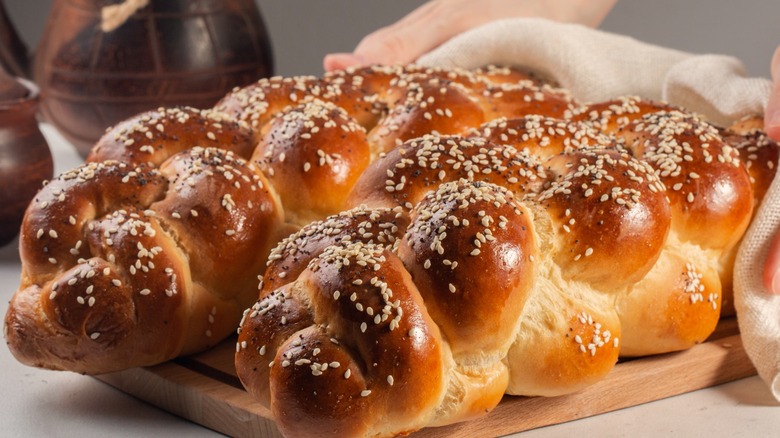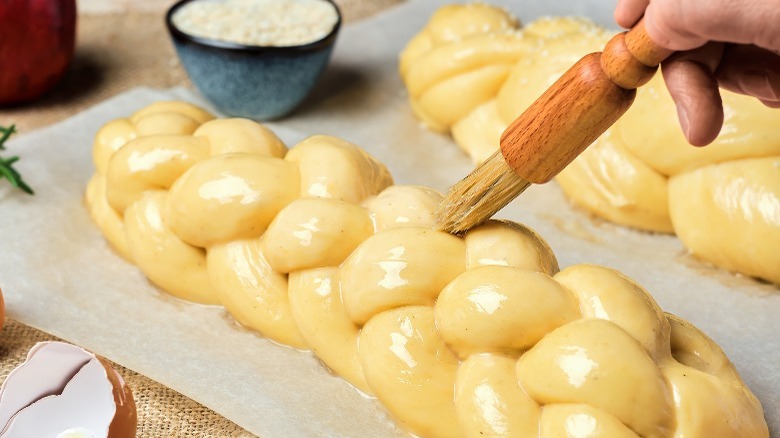The 6-Strand Braiding Technique Produces The Most Defined Challah Bread
The idea of baking sweet, eggy challah at home can be daunting. Jewish cooking virtuoso Joan Nathan says bakers must knead the dough and let it rise at least twice. That's a big time investment, but probably the most daunting part is the braiding, especially because many suggest a traditional challah has at least six strands. Keeping track of the strands as you twist and turn them is complicated, to say the least.
TikToker @Bklyn_Sour, a Middletown, New York, baker of small-batch sourdough breads, breaks it down with a by-the-numbers approach. The baker lays equal-length strands of dough side-by-side, attaching them neatly at the top and splaying out the other ends of the strands. Then, they number the strand positions 1 through 6. The strand positions are fixed, regardless of what you do with the strand sitting in that position.
They first cross the strands in positions 1 and 6 to take each other's places and create an attractive end for the loaf. After that, they begin the braid, moving the strand in position 1 to position 3 and strand 5 to position 1, repositioning the strands as needed to provide room to braid. After that, the strand in position 5 moves to 1 and the strand in position 6 becomes 4; 2 becomes 6, and then they start over and 1 becomes 3. The video takes you through twists and turns to the end, and it's wise to follow along with the video at first.
There are good reasons to braid 6 strands
In the 15th century, Ashkenazi Jews in Germany and Austria adopted the braided style of bread called "berchisbrod" or "perchisbrod" from southern Germany. While some say the braiding is referenced in the Bible as a symbol of strength, braiding may also keep the bread fresher for a little longer. The only time challah is round rather than braided is Rosh Hashanah, when round challahs are served to symbolize the cycle of the year past and the one ahead.
The number of strands can vary from three to 12, each number having a symbolic meaning in Judaism. Since two challahs are served together at the start of the Jewish sabbath, one thought is that the two six-stranded breads reference an ancient tradition of leaving 12 loaves of bread for the priests in the old temple, as Aaron is instructed to do in the Bible. The six strands may also represent the six days leading up to the Sabbath. But the strands may also be practical. Three strands give challah an airy interior, while a four-stranded challah is taller rather than wider. With six strands, the challah braid is the most well defined and the loaf is the tallest.
Challah bread changed when Jews came to America, becoming larger, sweeter, and more leavened. Today, while there are many differences between challah and brioche, challah is still more similar to the brioche than it was previously. But one thing that hasn't changed is the tradition of braiding it.

